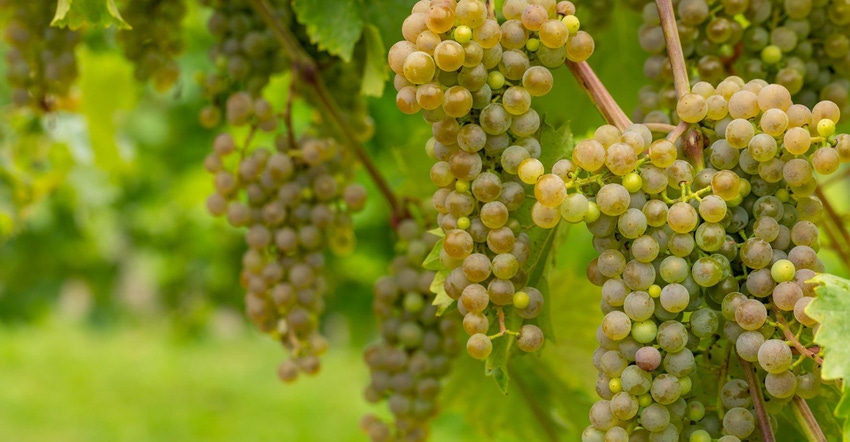January 6, 2023

It is clear that researchers at the University of Minnesota know how to produce wine grapes ready to take on northern climates as they released Clarion, the university’s sixth cold-hardy wine grape.
At the U-MN Horticultural Research Center, the base for the U-MN Grape Breeding and Enology program, researchers discovered that Clarion doesn’t just produce excellent vines: Its grapes continually produce high-quality, dry white wines with fruity attributes of citrus, pear, melon, apricot and chamomile. Some evaluators describe the wine as being similar to Southern Hemisphere sauvignon blanc.
With a less vigorous growth habit than other cold-hardy varieties, Clarion is easier for growers to manage in the vineyard. Its grape bunches are loose, which can contribute to reduced disease and insect pressure for conventional production methods. Clarion has known resistance to downy mildew, a major pest in the Eastern U.S. due to humid and rainy summers.
Years of grape research
U-MN researchers have been growing Clarion grape vines under the research name MN1220 for more than 20 years to test the hybrid vines’ cold-hardiness, disease resistance and other attributes for commercial and backyard cultivation. Test plots have been in evaluation for more than 10 years with nurseries and university and Extension partners across the United States.
Although marginally hardy in Zone 4 (Minnesota), this selection tested well in Iowa and Wisconsin (Zone 5) as part of a national variety testing program. Limited vines will be available beginning in 2023 for vineyards.
Matt Clark, a U-MN associate professor of horticultural science, expects commercial as well as backyard growers in Zone 4 to experiment with the grape in small quantities, despite its Zone 5 hardiness rating.
“If they’re concerned their site is marginal, putting in a small test plot of vines — and watching the vines for several years — is a great way to evaluate the variety,” Clark says.
Grape industry thrives
Past wine grape introductions from U-MN include Itasca, La Crescent, Frontenac (blanc, gris and noir), Edelweiss and Marquette.
Since the 1970s, U-MN research and the development of cold-hardy grapes have played an instrumental role in supporting grape growing in cold climates across the globe and building a strong Minnesota wine industry. The state is home to about 80 wineries, more than 60 of which currently produce wine.
A U-MN Extension report shows that Minnesota’s cold-hardy vineyards and wineries pumped more than $80.3 million into the state’s economy and supported more than 10,500 jobs in 2016.
Additional information about Clarion can be found at mnhardy.umn.edu/clarion.
About grape breeding at the University of Minnesota
The University of Minnesota Grape Breeding and Enology program is based in the Department of Horticultural Science at the College of Food, Agricultural and Natural Resource Sciences. Most of the grape breeding and evaluation takes place at the Horticultural Resource Center at the Minnesota Landscape Arboretum in Chaska, Minn. U-MN grape breeding research is also supported by the Minnesota Agricultural Experiment Station and the USDA National Institute of Food and Agriculture.
Source: University of Minnesota
You May Also Like




